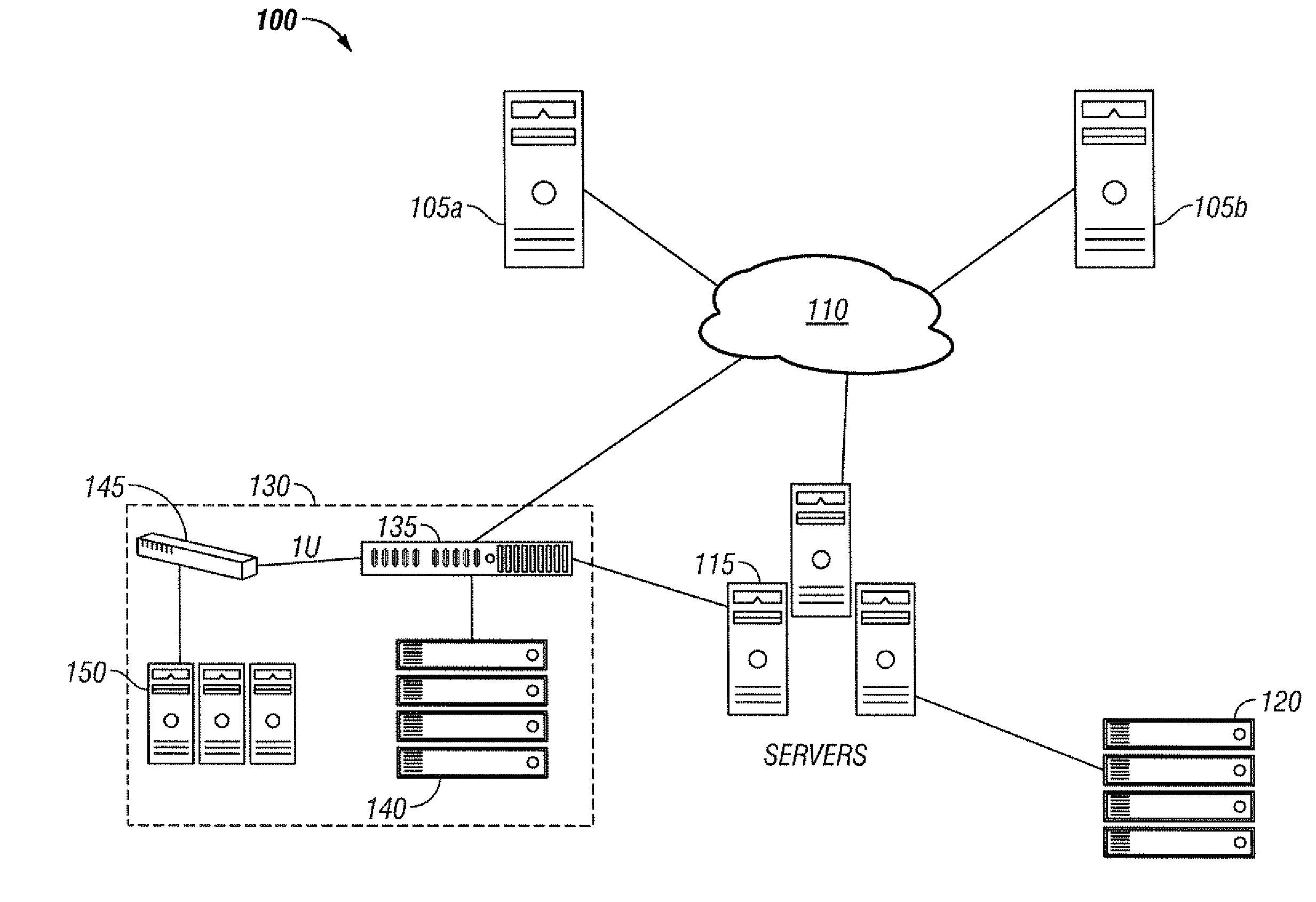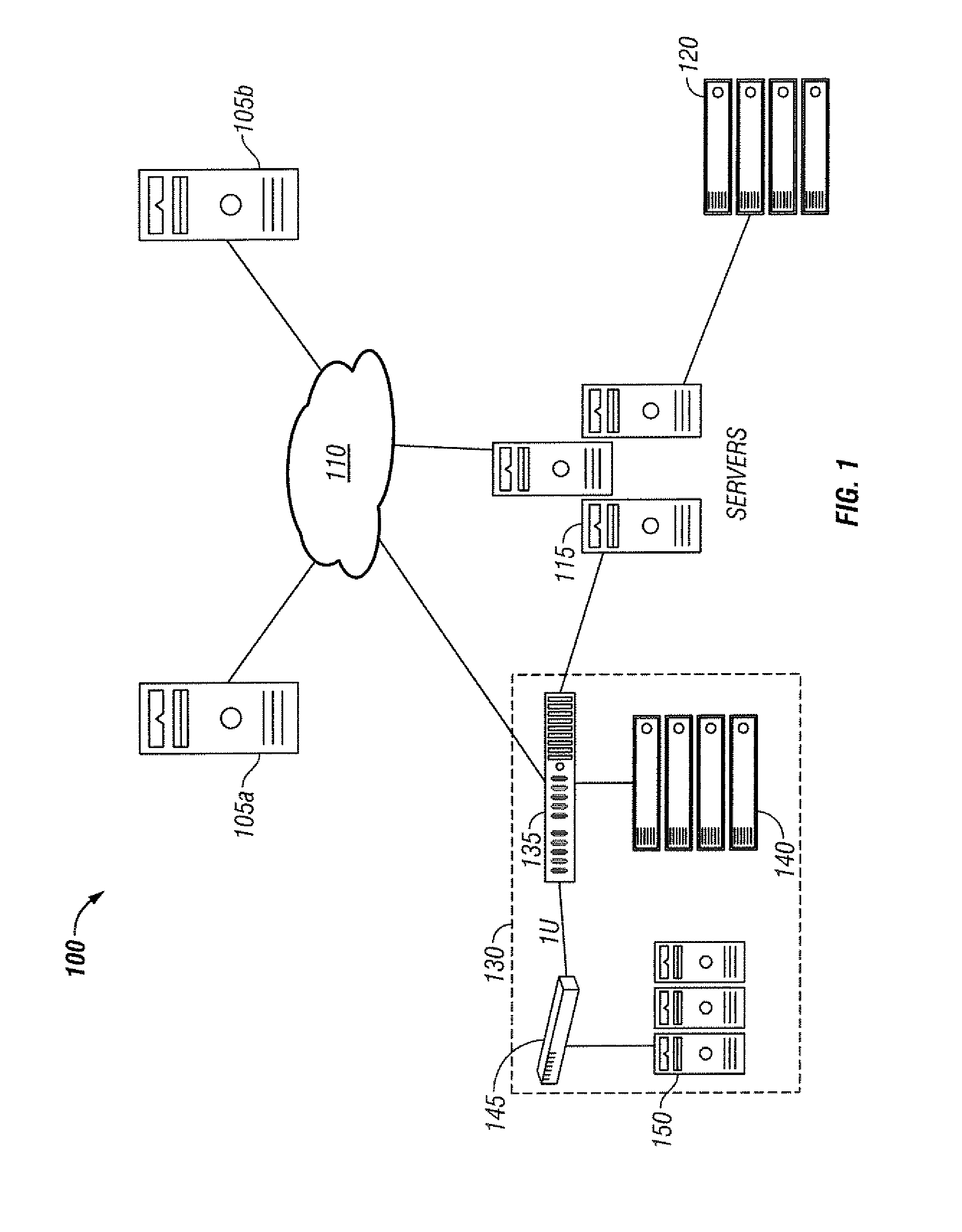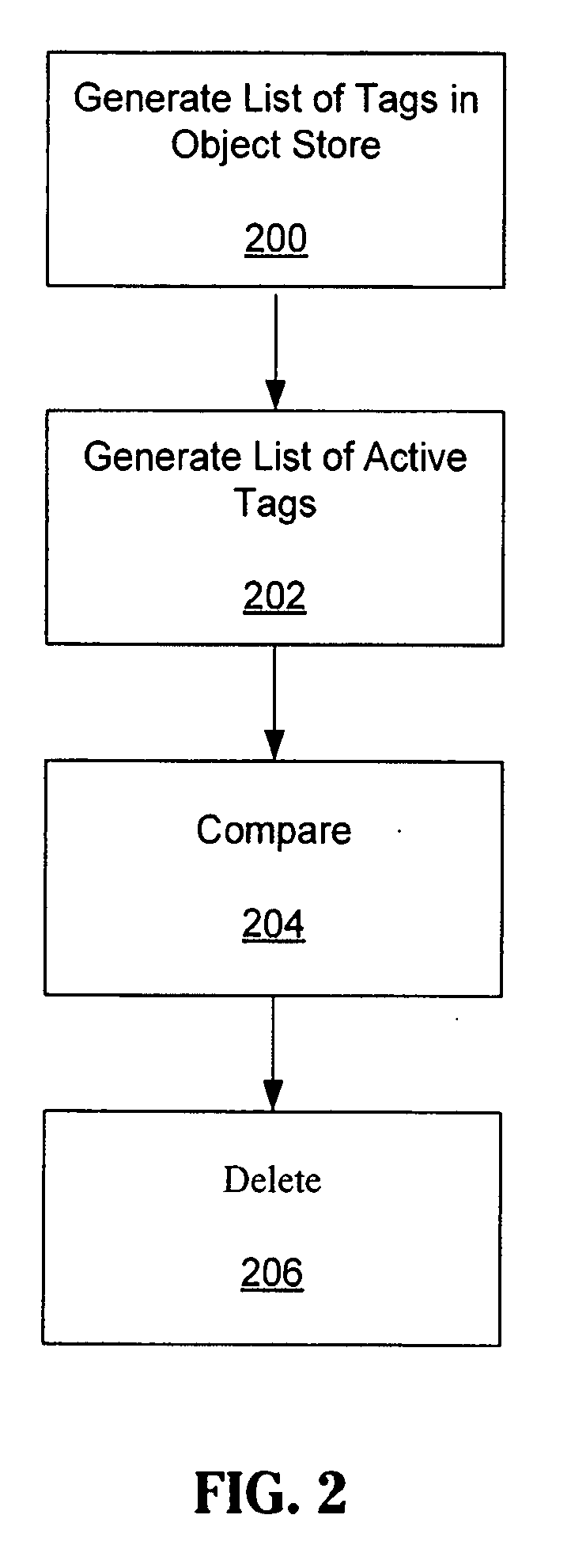Methods and systems for space management in data de-duplication
a data deduplication and space management technology, applied in the field of data processing systems, can solve the problems of data duplication in data storage systems, and large amount of electronic information duplicated
- Summary
- Abstract
- Description
- Claims
- Application Information
AI Technical Summary
Benefits of technology
Problems solved by technology
Method used
Image
Examples
Embodiment Construction
[0032]Various embodiments of the systems and methods described herein provide data de-duplication. For each block, hashes, Cyclic Redundancy Codes (“CRCs”) or any other code that might represent a block may be calculated and stored. A hash or hash function is a reproducible method for converting one block of data into a number, known as a tag, that represents that block of data. The hash is generally smaller than the original block of data and might serve as a digital “fingerprint” of the block of data, or “tag”. A CRC is a type of hash function that may be used to produce a checksum to detect errors in transmission or storage. Cryptographic strength hash functions may also be used, such as MD5 or SHA-1.
[0033]The first block of the set may be written normally and its address and tag can be stored and noted. Subsequent block hashes may be compared with previously written block hashes. An address of a block with a hash or CRC that matches a previously written block may be written to i...
PUM
 Login to View More
Login to View More Abstract
Description
Claims
Application Information
 Login to View More
Login to View More - R&D
- Intellectual Property
- Life Sciences
- Materials
- Tech Scout
- Unparalleled Data Quality
- Higher Quality Content
- 60% Fewer Hallucinations
Browse by: Latest US Patents, China's latest patents, Technical Efficacy Thesaurus, Application Domain, Technology Topic, Popular Technical Reports.
© 2025 PatSnap. All rights reserved.Legal|Privacy policy|Modern Slavery Act Transparency Statement|Sitemap|About US| Contact US: help@patsnap.com



